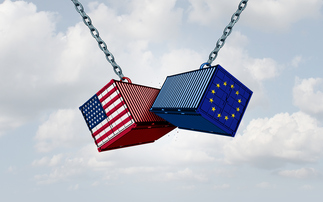European credit markets were hit this year by the rise in global trade tensions, a sudden spark in equity volatility and further political risks in Europe, mainly Italy.
In addition, economic data in the first half has surprised to the downside and the European Central Bank (ECB) announced the end of quantitative easing (QE) at the end of 2018, while keeping rates unchanged for one more year. The long unwinding road of quantitative easing Credit markets have posted negative total returns this year due to the widening of credit spreads. This negative performance has been across sectors with the higher beta names underperforming. The euro corporate index option-adjusted spread (OAS) hit the wides of the year at the end of June, reaching levels not se...
To continue reading this article...
Join Investment Week for free
- Unlimited access to real-time news, analysis and opinion from the investment industry, including the Sustainable Hub covering fund news from the ESG space
- Get ahead of regulatory and technological changes affecting fund management
- Important and breaking news stories selected by the editors delivered straight to your inbox each day
- Weekly members-only newsletter with exclusive opinion pieces from leading industry experts
- Be the first to hear about our extensive events schedule and awards programmes







